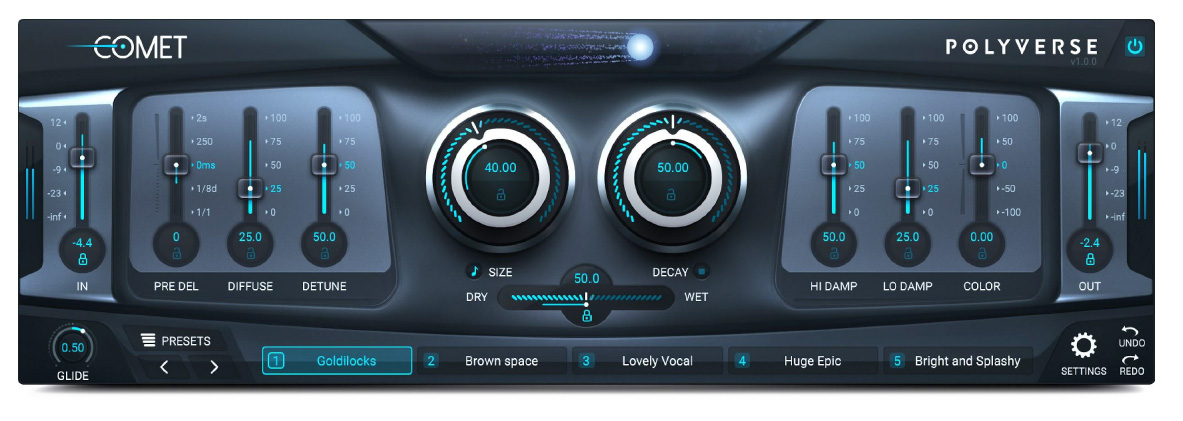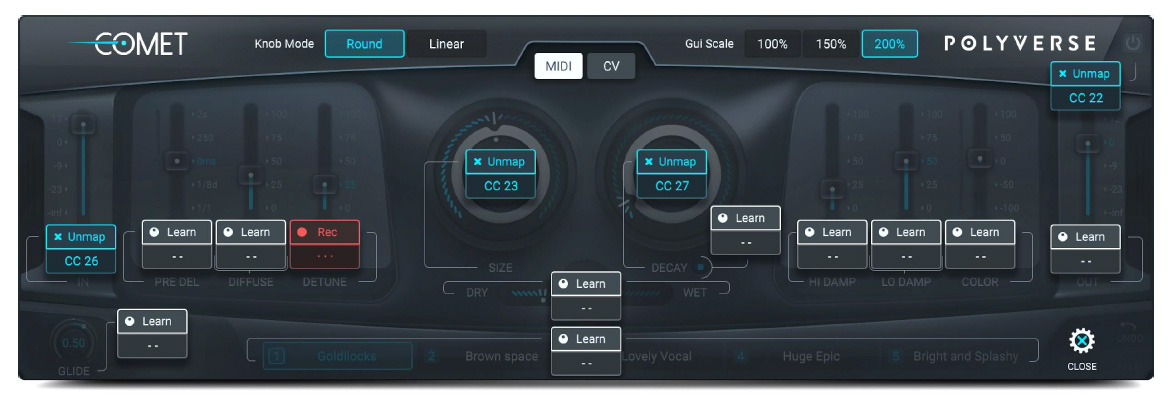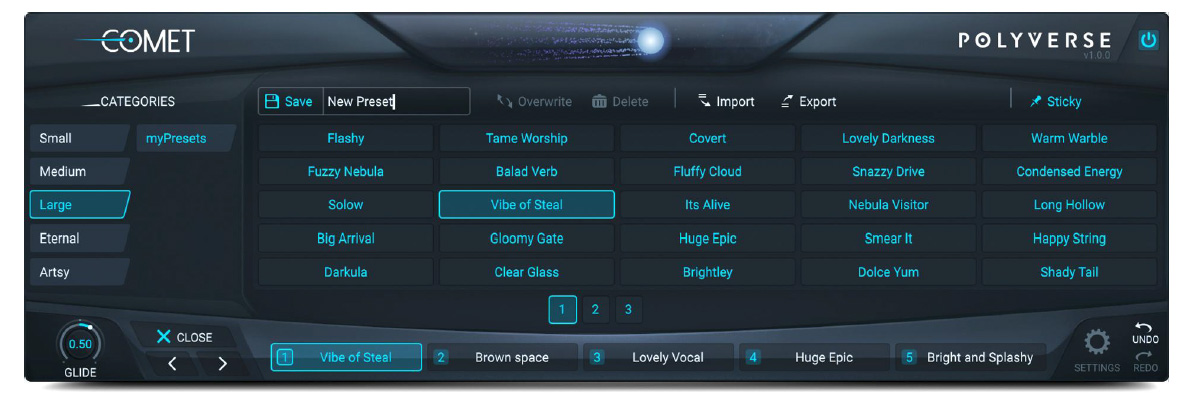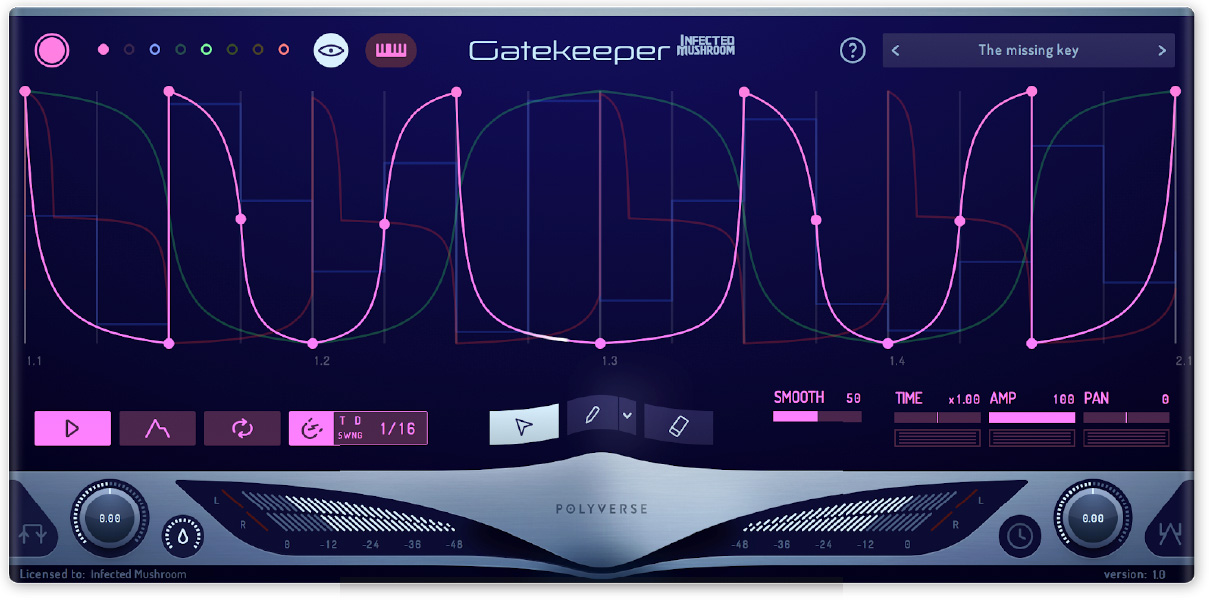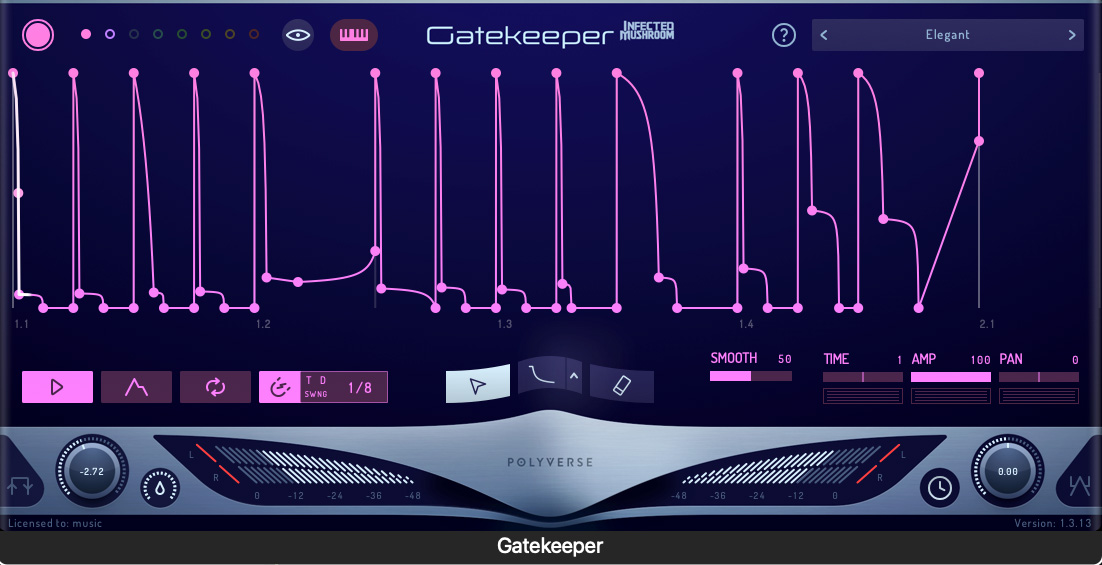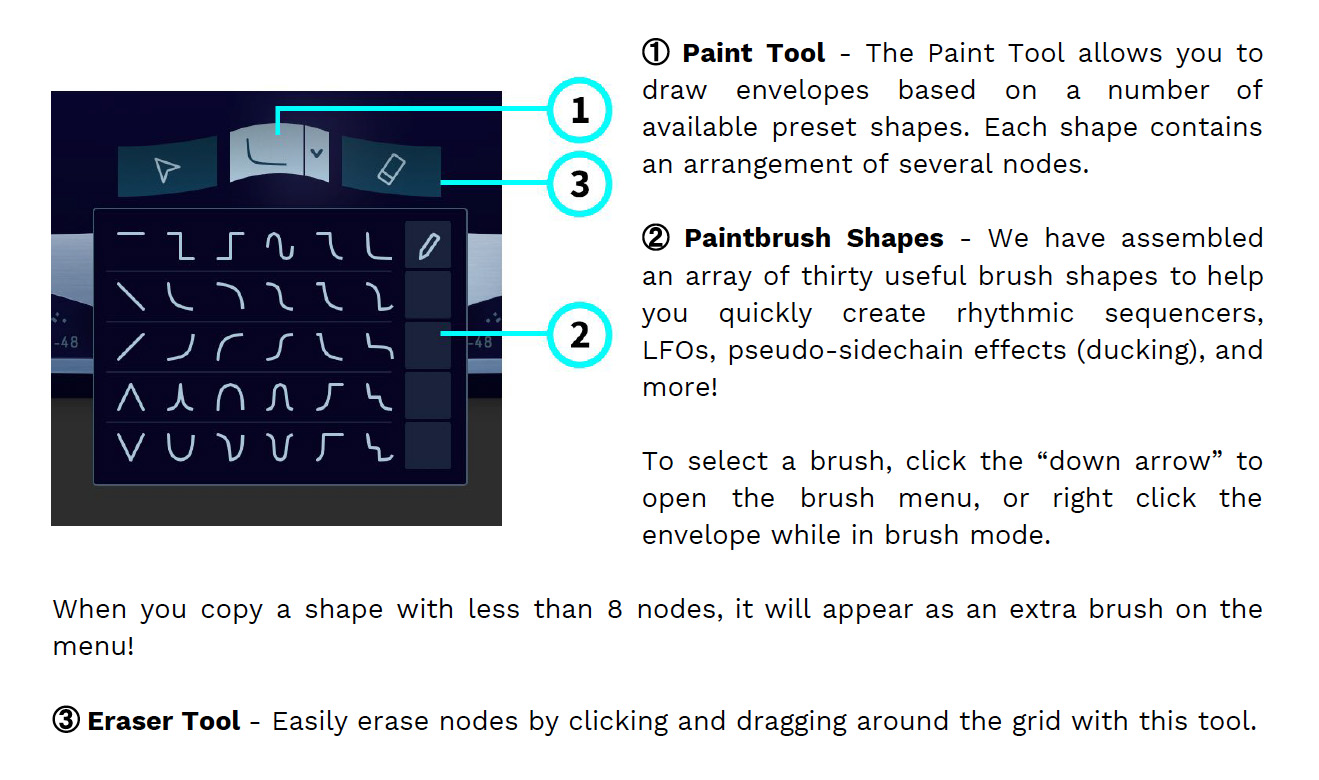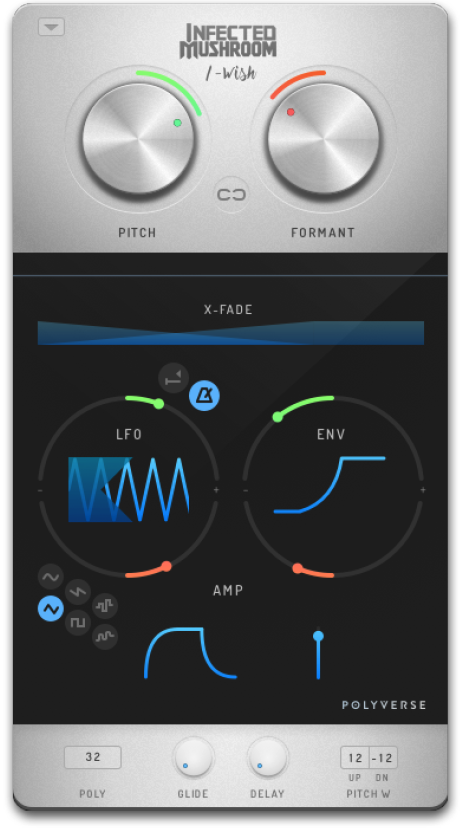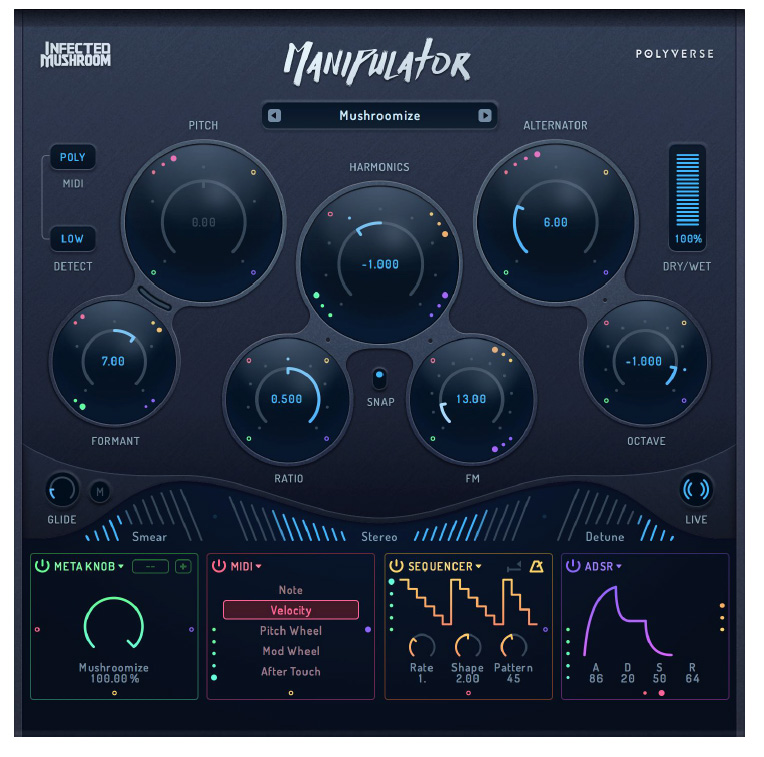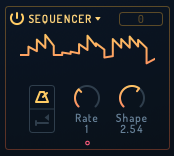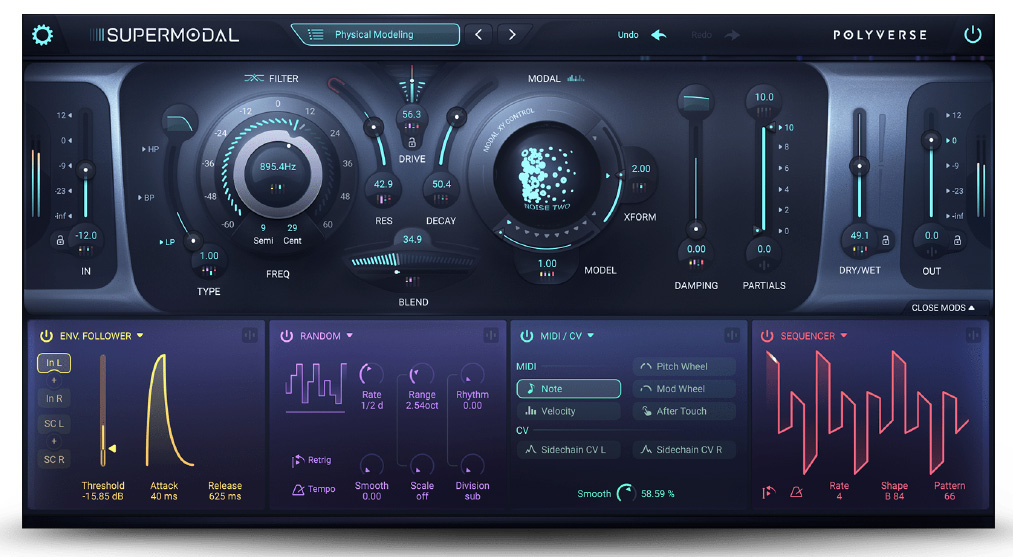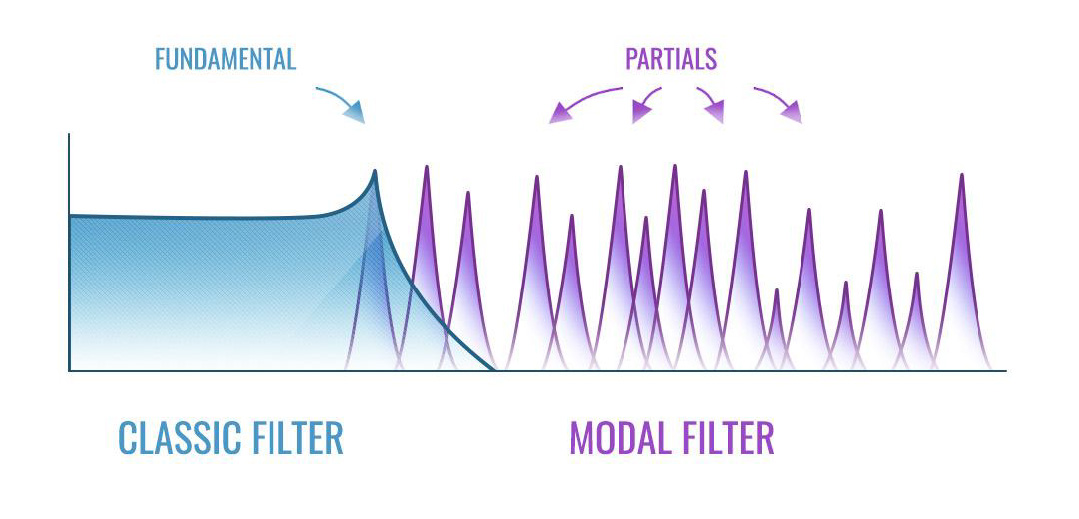In this review, I’ll have a look at a plugin bundle from Polyverse and Infected Mushroom. It includes three devices that are collaborative efforts with the electronic duo, Infected Mushroom (Gatekeeper, I Wish, and Manipulator). But let’s start with a reverb effect called, Comet.
COMET
Comet GUI
Comet is a lush algorithmic reverb from Polyverse that was developed with the help of Michał Garstecki, a Polish musician, educator, and developer. Although it might seem that a reverb plugin is a bit outside the wheelhouse for Polyverse, this device continues its commitment to elegant aesthetics and creative user control that goes beyond common approaches to reverb.
The ability to map both MIDI and CV to all the parameters is a nice touch and leads to creative results you would not achieve otherwise. Polyverse recommends using their plugin, Gatekeeper (discussed in the next section) for generating CV signals to control Comet. Typically, producers’ use of reverb involves setting up a reverb AUX track and sending it signal from audio or MIDI tracks via bus send. The standard “set and forget” mentality regarding reverb parameters ignores all the cool possibilities that the altering of reverb on-the-fly can produce.
MIDI and CV mapping
Comet not only recognizes the creative possibilities of realtime, MIDI-based, or CV-based reverb control but offers an interface that encourages it and makes exploration effortless and fun!
The preset matrix offers an array of configurations categorized–small, medium, large, eternal, and artsy. Perhaps the coolest thing about this plugin is the ability to morph between up to 5 presets found at the bottom of the interface. Going from one to the other can create fantastic pitching-shifting effects that evolve at a speed determined by the Glide control. This is great for transitions or for generating strange weirdness that unfolds unexpectedly.
Comet preset matrix
Here’s an example of real-time morphing between several presets on a vocal sample.
GATEKEEPER
Gatekeeper GUI
Everyone hates the gatekeepers, but you’ll love this collaborative effort from Polyverse and Infected Mushroom! It is one of the most sophisticated envelope-based processors I’ve come across, capable of running 8 envelopes simultaneously to affect amplitude or produce CV and MIDI to send out to external or internal devices. The seemingly unlimited number of envelope nodes makes it an envelope generator, LFO, and step sequencer all-in-one impressive device. The examples below demonstrate how Gatekeeper can take innocuous sustained sounds and turn them into complex rhythmic patterns.
You can set up loops within an envelope if you come across something particularly attractive and want to let it ride. The whole approach encourages experimentation and you can easily fall into the rabbit hole for hours messing around with the same sustained sample as a source.
As with many Polyverse/Infected Mushroom collaborations, you can use the plugin as a traditional audio effects device or drive it with MIDI triggers. Happily, the manual describes the set-ups in Pro Tools, Ableton Live, FL Studio, Sonar, Cubase, and Logic to accomplish MIDI control.
Gatekeeper nodes
You can easily create new nodes in the envelopes and drag them around freely or snap them to the grid. There are graphic-like tools to quickly create your own envelope shapes or choose from the robust preset menus categorized–rhythmic, evolving, triplets, swing, stereo, gating, ducking, drums, LFO, envelope, and effects.
Gatekeeper is one of the sweetest devices I’ve seen for creating rhythmic ear candy–producing everything from glitchy goodness to polyrhythmic complexity.
I WISH
This device, self-proclaimed as a granular note freezer, was the brainchild of Infected Mushroom and coded by Polyverse. You set the device up as you would a vocoder. It is instantiated as a virtual instrument and takes a side chain input as a sound source. From there the plug uses granular processes to pitch, mangle, and glitchify the sound in various ways
Cover art for Army of Mushrooms
You can apply LFOs and envelopes to shape the sound to your heart’s content. Once you choose a shape you can click and drag it to tweak it freely or synced to tempo. The LFO and envelope controls use the initial grain to generate alterations in the pitch and formants of the sound resulting in juicy unexpected consequences.
I Wish GUI
In the examples below, I start with a sort of dry monotone vocal line then use an arpeggiated chord to drive the I Wish device. You can hear the rhythmic pause at the end of each phrase from the original vocal.
Deceptive in its simplicity in design, I Wish delivers a method of transforming a simple input source into something potentially magnificent. It carves out undiscovered jewels from whatever raw material you provide.
MANIPULATOR

Manipulator is another collaboration with Infected Mushroom that promises mangling, pitch-shifting, timbre-twisting madness. Throw in a vocal or melodic line and try a few presets to hear exactly what Manipulator is capable of. It can bend a sound beyond recognition or provide a weird doubling effect by adjusting the wet/dry mix.
Manipulator GUI
Four modulation slots allow for sequencer, ADSR, follower, and MIDI control. The sequencer is especially tactile and very powerful given its extremely small screen footprint. The Shape control turns the sequencer steps into a series of tiny envelopes–lovely design.
Manipulator Sequencer
The four main parameter groups include pitch/formant, harmonics/ratio/FM, and alternator/octave. It’s nice that you never have to leave the main interface to get what you want and scanning through presets is effortless. Or you can poke around in the various preset categories: subtle, morphs, rhythmic, FX, and MIDI. The MIDI category focuses on presets that take advantage of direct control via MIDI note, velocity, pitch wheel, aftertouch, and CC input. The Meta knob is useful for modulating several parameters with a single switchable Uni/Bi-Polar knob
Manipulator modulators
Some things are better explained with sound so below are five examples of what Manipulator can do to a simple vocal line.
SUPERMODAL
Supermodal uses “200 surgically precise bandpass filters to emulate the behavior of various resonating bodies.” In some sense, it is similar to a component modeling or physical modeling synth, except it uses a single audio signal as raw material and creates its effect from filtering instead of signal generation and complex component modeling algorithms.
Supermodal GUI
Like other Polyverse devices, it can be instantiated as an audio effect or loaded as an instrument with a side chain input similar to a vocoder. Polyverse provides set-up instructions for this for most major DAWs.
Supermodal uses two basic filtering methods:
- Classic Filter – a 24dB per octave multimode filter
- Modal Filter – a modeling filter that attempts to emulate the resonant characteristics of a physical body
The Models and Transformations will remind users of somewhat similar controls in component modeling synthesizers and include:
- Noise
- Vowels
- Detune
- Struck
- Waveform
- Materials
- Chord
- Interval
- Special FX
The Modulation section is similar to that of Manipulator and allows up to 4 modulators and cross-modulation which makes the possibilities infinite for all practical purposes. Also like Manipulator, you can easily map parameters to external controllers to make the devices truly playable.
Some people might say it doesn’t matter, but the graphics are stunning and to me, that does make a difference. A well-designed GUI inspires creative thinking providing both visual and aural feedback for the user. The device comes configured with 12-tone equal tempered tuning, but you can also drag and drop any Scala tuning file (.scl) for some microtonal fun.
Below are a few preset examples using a droning train whistle sound as a source.
Dry Source
Yola (uses a modulating Vowel setting)
Who Messed It Up (uses Detune)
lDrums (uses the Laser Modal filter)
Bassliner (uses Detune and three sequencers)
CONCLUSIONS
All these Polyverse plugins share a commitment to experimentation and elegant design aesthetics. They are versatile in terms of implementation as MIDI devices and/or audio effects, and several make use of envelope-based processing in unique and inspiring ways. There are plenty of well-categorized presets and tactile customization options that make using these devices incredibly fun to use! An outstanding collection of weirdness from Polyverse!
EXTRAS
If want to win all these plugins enter the first Waveinformer Mix Contest for FREE.
Assess your knowledge of essential audio concepts using our growing catalog of online Quizzes.
Explore more content available to Subscribers, Academic, and Pro Members on the Member Resources page.
Not a Member yet? Check the Member Benefits page for details. There are FREE, paid, and educational options.


